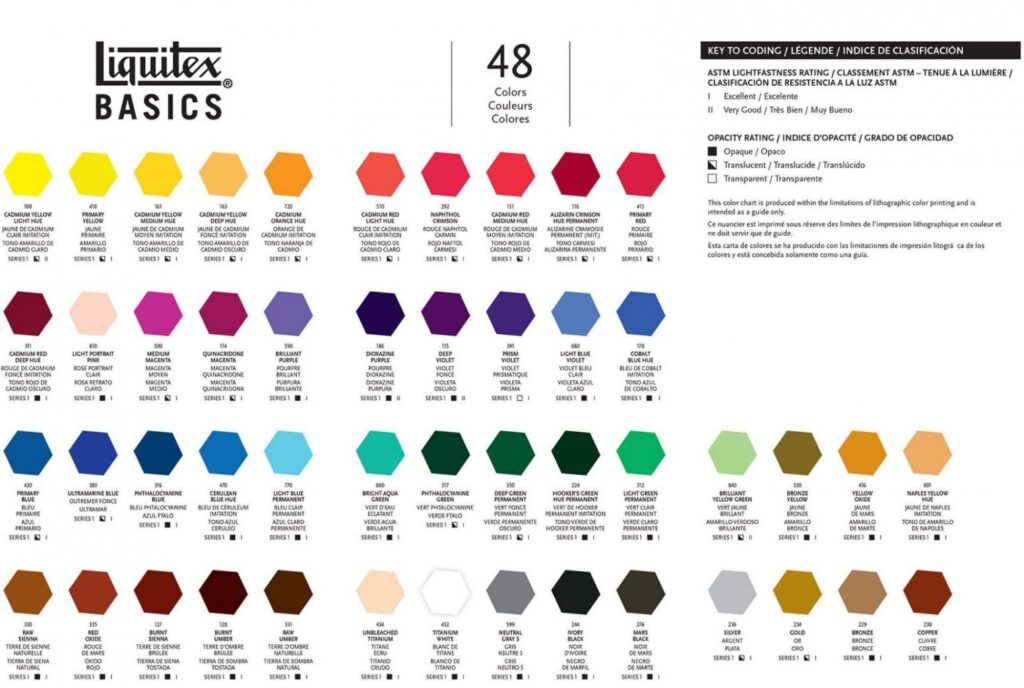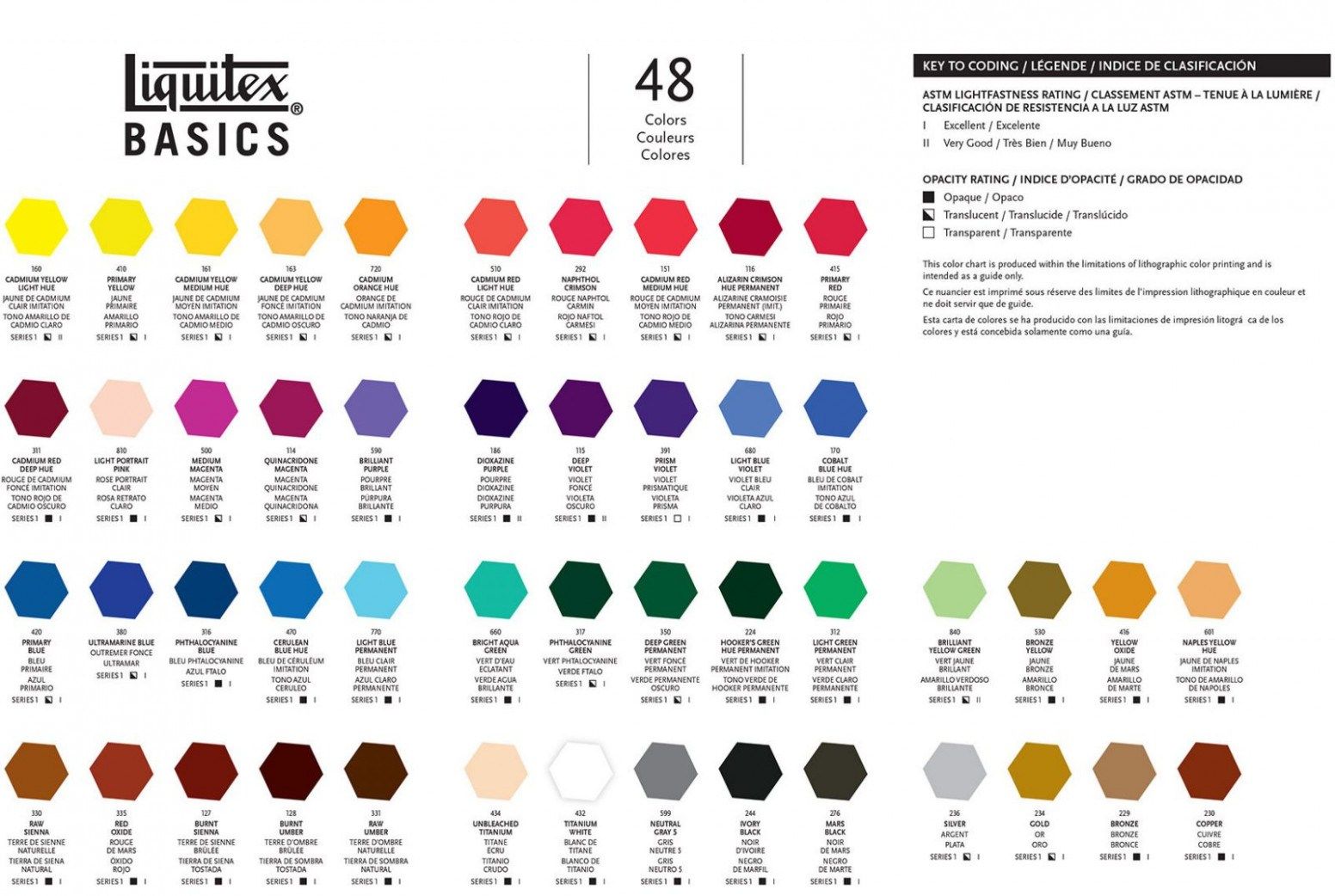
Decoding Color: A Comprehensive Guide to the Acrylic Color Wheel Chart
Understanding color theory is fundamental for any artist, designer, or creative individual. At the heart of this understanding lies the acrylic color wheel chart. This indispensable tool provides a visual representation of color relationships, helping artists mix colors effectively, create harmonious palettes, and achieve desired effects in their artwork. This article delves into the intricacies of the acrylic color wheel chart, exploring its components, how to use it, and its practical applications in acrylic painting.
What is an Acrylic Color Wheel Chart?
An acrylic color wheel chart is a circular diagram that organizes colors based on their relationships to one another. It’s specifically tailored to acrylic paints, accounting for their unique properties and mixing behaviors. The color wheel is typically divided into twelve sections, representing the primary, secondary, and tertiary colors.
Primary Colors
The primary colors are red, yellow, and blue. These colors are considered the foundation of the color wheel because they cannot be created by mixing other colors. They serve as the building blocks for all other colors.
Secondary Colors
Secondary colors are created by mixing two primary colors. The secondary colors are:
- Green (yellow + blue)
- Orange (red + yellow)
- Violet (red + blue)
Tertiary Colors
Tertiary colors are created by mixing a primary color with a neighboring secondary color. The tertiary colors are:
- Red-orange
- Yellow-orange
- Yellow-green
- Blue-green
- Blue-violet
- Red-violet
Understanding Color Relationships
The acrylic color wheel chart is more than just a collection of colors; it illustrates the relationships between them. Understanding these relationships is crucial for creating visually appealing and harmonious artwork.
Complementary Colors
Complementary colors are located directly opposite each other on the color wheel. Examples include red and green, blue and orange, and yellow and violet. When placed next to each other, complementary colors create a strong contrast, making each color appear more vibrant. They can also be mixed to create neutral tones.
Analogous Colors
Analogous colors are located next to each other on the color wheel. They create a harmonious and soothing effect when used together. Examples include blue, blue-green, and green; or red, red-orange, and orange. Analogous color schemes are often used to create a sense of unity and tranquility in a painting.
Triadic Colors
Triadic colors are three colors that are equally spaced apart on the color wheel. Examples include red, yellow, and blue; or green, violet, and orange. Triadic color schemes are vibrant and dynamic, creating a balanced yet energetic effect.
Tetradic Colors (Double Complementary)
Tetradic colors involve two sets of complementary colors. This creates a complex and rich color scheme. It’s important to balance the colors carefully to avoid overwhelming the viewer.
Using the Acrylic Color Wheel Chart for Mixing
One of the primary benefits of the acrylic color wheel chart is its ability to guide color mixing. By understanding the relationships between colors, artists can predict the results of mixing different pigments.
Mixing Secondary and Tertiary Colors
The acrylic color wheel chart clearly shows which primary colors to mix to create secondary colors, and which primary and secondary colors to mix to create tertiary colors. This is a straightforward application of the chart that helps avoid muddy or unexpected results.
Creating Neutral Tones
Mixing complementary colors together results in a neutral tone, such as brown or gray. The exact shade of the neutral tone depends on the proportions of the complementary colors used. Artists can use this technique to create subtle shadows and variations in their paintings. Experimentation is key to achieving the desired neutral.
Adjusting Color Temperature
The acrylic color wheel chart also helps in understanding color temperature. Colors on the red-orange side of the wheel are considered warm, while colors on the blue-green side are considered cool. By adding a touch of a warm color to a cool color (or vice versa), artists can subtly adjust the temperature of their mixes.
Acrylic Paint Properties and the Color Wheel
Acrylic paints have unique properties that influence how they interact with the color wheel. Understanding these properties is essential for achieving accurate and predictable results.
Opacity and Transparency
Some acrylic paints are opaque, meaning they completely cover the underlying surface. Others are transparent, allowing the underlying surface to show through. The opacity or transparency of a paint affects how it mixes with other colors. Transparent colors are often used for glazing, while opaque colors are used for layering and creating solid blocks of color.
Tinting Strength
Tinting strength refers to a paint’s ability to influence the color of another paint when mixed. Some pigments have a very high tinting strength, meaning a small amount can significantly alter the color of a larger amount of another paint. Understanding tinting strength helps avoid overpowering mixtures.
Drying Time
Acrylic paints dry quickly, which can affect color mixing. It’s important to mix colors efficiently and apply them to the canvas before they dry. This rapid drying time can also influence layering techniques, as subsequent layers can be applied relatively quickly.
Practical Applications of the Acrylic Color Wheel Chart
The acrylic color wheel chart has numerous practical applications for artists using acrylic paints.
Color Palette Selection
The color wheel can be used to create harmonious and visually appealing color palettes. Whether choosing complementary, analogous, triadic, or tetradic color schemes, the chart provides a clear guide for selecting colors that work well together. This helps ensure that the final artwork is cohesive and aesthetically pleasing.
Achieving Specific Moods and Effects
Different color combinations evoke different moods and emotions. Warm colors tend to create a sense of energy and excitement, while cool colors tend to create a sense of calm and serenity. By understanding the psychological effects of different colors, artists can use the acrylic color wheel chart to create artwork that conveys specific emotions.
Problem-Solving Color Issues
If a painting looks unbalanced or lacks visual interest, the acrylic color wheel chart can help identify the problem and suggest solutions. For example, if a painting lacks contrast, adding a touch of a complementary color can create a more dynamic effect. If a painting looks too chaotic, simplifying the color palette and focusing on analogous colors can create a more harmonious effect.
Creating Your Own Acrylic Color Wheel Chart
While pre-made acrylic color wheel charts are readily available, creating your own can be a valuable learning experience. This allows you to gain a deeper understanding of color mixing and the properties of your specific acrylic paints.
Gather Your Materials
You will need a blank canvas or heavy paper, a set of acrylic paints (including primary colors), a palette, brushes, and a compass or circular template.
Draw the Color Wheel
Use the compass or circular template to draw a circle on the canvas. Divide the circle into twelve equal sections, representing the primary, secondary, and tertiary colors.
Mix and Apply the Colors
Start by painting the primary colors (red, yellow, and blue) in their respective sections. Then, mix the secondary colors (green, orange, and violet) and paint them in their sections. Finally, mix the tertiary colors (red-orange, yellow-orange, yellow-green, blue-green, blue-violet, and red-violet) and paint them in their sections.
Label the Colors
Label each section with the name of the color. This will help you remember the color relationships and mixing formulas.
Advanced Techniques with the Acrylic Color Wheel Chart
Once you have a solid understanding of the basics, you can explore more advanced techniques using the acrylic color wheel chart.
Creating Custom Color Palettes
Experiment with different color combinations to create unique and personalized color palettes. Consider the mood and effect you want to achieve, and use the color wheel to guide your selections.
Exploring Value and Saturation
In addition to hue (color), value (lightness or darkness) and saturation (intensity) are important aspects of color theory. Use the acrylic color wheel chart in conjunction with value and saturation scales to create even more nuanced and sophisticated color schemes. [See also: Understanding Value in Painting]
Using Color Harmonies in Composition
Consider how color harmonies interact with other elements of composition, such as line, shape, and texture. Use color to guide the viewer’s eye, create focal points, and establish a sense of balance and rhythm in your artwork. [See also: Principles of Art and Design]
Conclusion
The acrylic color wheel chart is an invaluable tool for artists working with acrylic paints. By understanding the relationships between colors, artists can mix colors effectively, create harmonious palettes, and achieve desired effects in their artwork. Whether you are a beginner or an experienced artist, mastering the acrylic color wheel chart will significantly enhance your understanding of color theory and improve your painting skills. Embrace the acrylic color wheel chart, experiment with different color combinations, and unlock the full potential of your creative expression. The acrylic color wheel chart is more than just a diagram; it’s a gateway to a deeper understanding of color and its power to transform your art. Using the acrylic color wheel chart allows you to create dynamic and visually appealing pieces. The acrylic color wheel chart is a resource that should be in every artist’s toolkit. Remember to keep your acrylic color wheel chart handy as you explore different techniques, and your mastery of color will continue to grow. An acrylic color wheel chart can assist in problem-solving color-related issues in a painting. Don’t underestimate the power of an acrylic color wheel chart, as it is a fundamental aspect of painting. Keep practicing with your acrylic color wheel chart and watch how your painting skills improve. Learning how to use an acrylic color wheel chart effectively is a skill that will serve you well throughout your artistic journey. The acrylic color wheel chart provides a foundation for understanding more complex color concepts.

